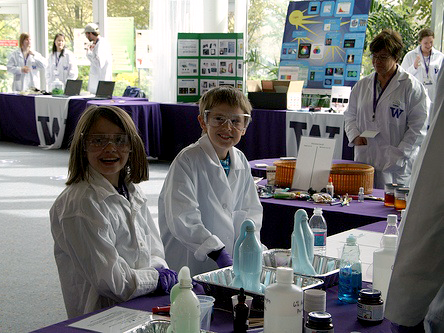CENTC uses catalysis to make chemical reactions go faster. This helps to use less energy and make less waste when making stuff like fuel for cars, plastic bottles and toys, and medicine.
You can use a catalyst at home and see for yourself the power of catalysis in speeding up a chemical reaction.
A fun demonstration of catalysis that you can do at home is called Elephant Toothpaste. This activity uses readily available and safe materials to show the amazing impact of catalysis on the rate of a chemical reaction.
Over time hydrogen peroxide will break down very slowly to form water and oxygen gas. The addition of a catalyst speeds up the rate of this reaction millions of time faster to generate massive quantities of bubbles.
The yeast contains a catalyst that speeds up the breakdown of hydrogen peroxide causing the rapid formation of water and oxygen gas. Tiny bubbles of the gas are trapped in the detergent and the speed of the reaction causes the resulting foam to squirt from the bottle such that it resembles toothpaste being squeezed from a tube. The chemical reaction generates heat, so the bottle and the foam will feel very warm.

© 2007 - 2026 Center for Enabling New Technologies Through Catalysis
centcweb@u.washington.edu
This work was supported by NSF under the CCI Center for Enabling New Technologies Through Catalysis, CHE-1205189. Any opinions, findings, and conclusions or recommendations expressed here are those of the authors and do not necessarily reflect the views of the National Science Foundation (NSF).